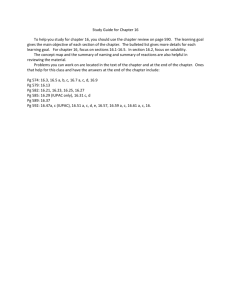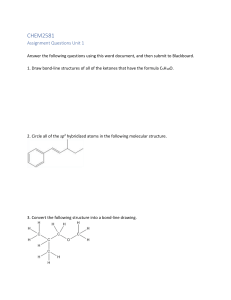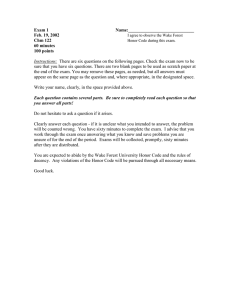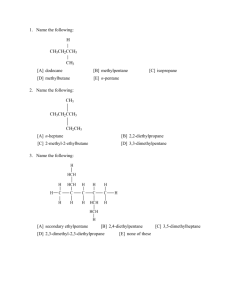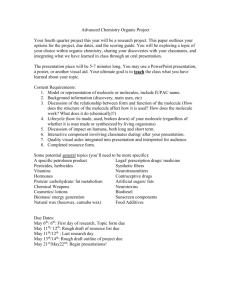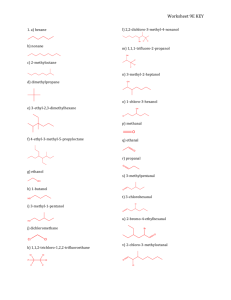Exam 1 Name:_____________________________ Feb. 19, 2002
advertisement
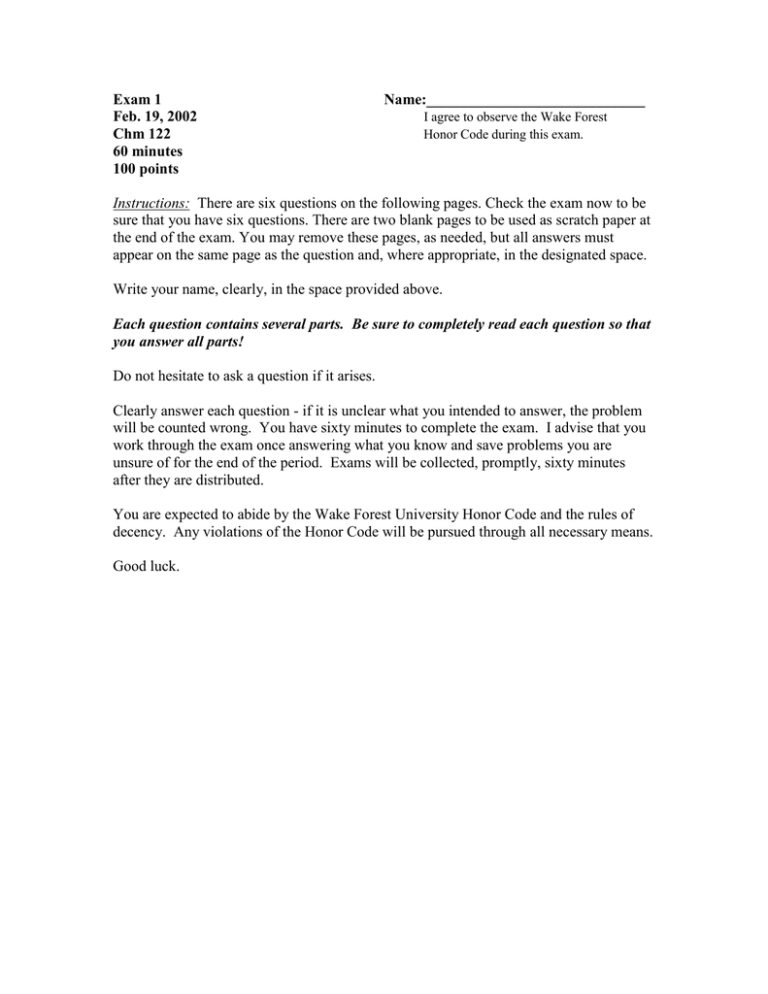
Exam 1 Feb. 19, 2002 Chm 122 60 minutes 100 points Name:_____________________________ I agree to observe the Wake Forest Honor Code during this exam. Instructions: There are six questions on the following pages. Check the exam now to be sure that you have six questions. There are two blank pages to be used as scratch paper at the end of the exam. You may remove these pages, as needed, but all answers must appear on the same page as the question and, where appropriate, in the designated space. Write your name, clearly, in the space provided above. Each question contains several parts. Be sure to completely read each question so that you answer all parts! Do not hesitate to ask a question if it arises. Clearly answer each question - if it is unclear what you intended to answer, the problem will be counted wrong. You have sixty minutes to complete the exam. I advise that you work through the exam once answering what you know and save problems you are unsure of for the end of the period. Exams will be collected, promptly, sixty minutes after they are distributed. You are expected to abide by the Wake Forest University Honor Code and the rules of decency. Any violations of the Honor Code will be pursued through all necessary means. Good luck. 1. Draw Newman projections, looking down the indicated bond, for the most stable and least stable conformations of this molecule. Name this compound according to IUPAC rules. 12 points H OH Br IUPAC Name: Most Stable Conformation Least Stable Conformation 2. In the boxes provided, draw the structure of a molecule having the molecular formula C6H10O and the functional group indicated. How many degrees of unsaturation are present in these molecules? Of these three, identify the molecule having the most acidic proton and write the reaction equation for the equilibrium of this molecule with aqueous sodium hydroxide. In which direction would the equilibrium lie? 15 pts ketone Degrees of Unsaturation: alcohol ether 3. In each pair, indicate if the relationship is one of constitutional isomers, conformational isomers, or stereoisomers. In each pair, circle the more stable structure. 12 pts H H H Cl H3C OH CH 3 H H3C OH CH 3 Cl H H CH 3 H C2H5 H C3H7 H H3C H CH 3 Ph H OH H Ph Ph Ph H OH 4. Supply the missing starting material, reagent, or product(s). If there would be more than one product formed, write all of the products and assign major and minor products. Where appropriate, indicate the correct stereochemistry. 24 pts 1. O3 2. Zn, H2O Cl KOtBu, tBuOH H2, Pt KMnO4 HO HO Br EtOH, heat 1. 9-BBN 2. H2O2, NaOH (aq.) Cl2, EtOH O H 5. When 2,2-dimethylcyclopentanol is dissolved in concentrated sulfuric acid, three isomeric alkenes are produced. Provide a detailed mechanism that explains the production of all three products. Be sure to include electron-pushing arrows, all intermediates (but not transition states), and charges. Name the major product according to IUPAC rules. 24 pts conc. H2SO4 OH A IUPAC Name of Major Product: B C 6. Compound A (C7H15Br) is not a primary bromide, yet yields a single alkene (compound B) upon treatment with sodium ethoxide in ethanol. Hydrogenation of compound B yields 2,4-dimethylpentane as the exclusive product. Provide the structures of A and B in the boxes provided; logical reasoning to support these structures; the type of reaction in going from A to B; and the IUPAC names of compounds A and B, in the space provided. 13 pts IUPAC Name of A: IUPAC Name of B: Compound A Compound B
